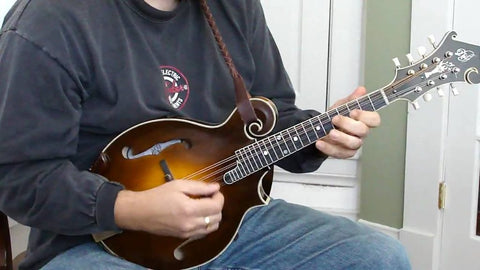BLUEGRASS MANDOLIN - A STYLE AND F STYLE
Hello guys, how are you? I hope that all of you are ready to learn something new about musical instruments. Well, today, I am going to discuss some interesting styles of bluegrass mandolin. If anyone here is new to music and doesn't have any knowledge about these popular types of mandolins, then don't worry. Get ready to learn!
Mandolin - An Introduction
The mandolin is a string melodic instrument in the lute family. It is generally played with a pick or plectrum. Usually, it has four pairs of doubled metal strings tuned as one. The paired strings are ordinarily tuned in a progression of perfect fifths. It is the soprano individual from a family of mandolins. The mandolin is analogous to the violin, whereas the mandolin is analogous to the viola.
Bluegrass Mandolin
It is a type of mandolin playing, most commonly heard in bluegrass bands. You can see mandolins in numerous shapes and sizes but all are not suitable for bluegrass playing. Usually, there are one or two styles that bluegrass mandolin players can choose from. Both have flat or nearly flat backs and arched tops. There are generally a-style and f-style mandolins.

A-Style Mandolin
An A-style mandolin has a teardrop-shaped body, generally with a round hole. This type of mandolin generally has a fuller, sweeter tone. Depending on the type of wood used to make the instrument, the tone can sometimes be described as woody.
F - Style Mandolin
It is a more stylish mandolin with a spiraled wooden curl on the upper side and a couple of points on the lower side. The F-style mandolins have the brightest, most penetrating sound. The F-style mandolin is used to have a clear sound and has enough power to play in jam sessions around campfires.
The Bluegrass Mandolin Style
From the beginning, the mandolin has been a core instrument in bluegrass music. It can be used with guitar, fiddle, banjo, upright bass, and sometimes dobro. Each of these instruments has a specific part to play in the performance of bluegrass music. There are three styles which commonly used :
- Rhythm
This type of music is poly-rhythmic in which each instrument in the band adds to the musicality of the tune in its own particular manner. This mandolin has a high toned string which makes its contribution with a technique called a "chop," also known as chunking. Snare drum-like chords are played on the second and fourth beats of each bar (or the second and third in the case of 3/4 time). By releasing the pressure of the fingers shortly after striking each chord, the chops create a driving, percussive effect.
- Fill and Backup
Bluegrass singing normally consolidates long-held notes and sometimes pauses for extra "turnaround" notes at the end of lyrical lines. Mandolinists play straightforward harmonies, countermelodies, or delicate cleaving in behind the singing and alternately contribute striking spontaneous creations and "licks" amid the pauses and turnarounds.
- Breaks, kickoffs, and endings
This American style of music is determined by songs with simple, clear, or straightforward verses and choruses, scattered with instrumental impromptu creations called "breaks" provided by melodic instruments, including the mandolin. Breaks are synonymous with playing a solo. A decent mandolin break may stick reasonably to the song of the tune, or it might be all impromptu creation around the chord progression. In most cases, the mandolin player will include components of the song, supplemented by the act of spontaneity and chording. Kickoffs (which lead the band to a tune) and endings are like breaks; however, they are typically shorter.
SummaryBluegrass mandolin styles are just amazing and also very easy to learn. Get ready to learn something unique and new.
Lesson Pros
Learn from the Pros
If you are interested in learning to play the mandolin, check out our Mandolin Courses or All Lesson Pros Courses.

